In today’s ever-evolving work landscape, the home office has transcended its former status as a luxury, becoming an indispensable sanctuary for productivity and creativity.
As remote work continues to flourish, the need for a comfortable, inspiring workspace within our homes has never been more paramount. This comprehensive guide explores 75 innovative ideas to metamorphose your home office into a cozy haven that not only fosters efficiency but also nurtures your well-being.
From ergonomic furniture arrangements to atmospheric lighting solutions, and from color psychology to tech integration, we’ll delve into a myriad of strategies to create a workspace that’s uniquely tailored to your needs and aesthetic preferences.
Cozy Home Office Ideas
Whether you’re carving out a corner in your living room or redesigning a dedicated room, these ideas will help you craft a home office that seamlessly blends functionality with comfort, ensuring that your work-from-home experience is both productive and enjoyable.
Creating a Comfortable Atmosphere
1. Soft Lighting Solutions

Lighting plays a crucial role in setting the mood and functionality of your home office. Opt for warm, soft lighting options that create a cozy ambiance while providing adequate illumination for work. Consider installing dimmer switches to adjust the brightness according to the time of day or your specific tasks.
Table lamps with fabric shades can add a touch of elegance and diffuse light evenly across your workspace. For a more natural feel, position your desk near a window to take advantage of sunlight, but make sure to have proper window treatments to control glare and maintain a comfortable temperature.
2. Plush Area Rugs

Introducing a plush area rug to your home office can instantly add warmth and comfort to the space. Choose a rug with a soft, luxurious texture that feels wonderful underfoot. This not only provides insulation but also helps absorb sound, creating a quieter and more peaceful work environment.
Consider the size and placement of the rug carefully. A large rug that extends beyond your desk area can help define the workspace within a larger room. Opt for colors and patterns that complement your existing decor while adding a touch of personality to your office.
3. Comfortable Seating Options

Investing in a comfortable chair is essential for long hours of work. Look for ergonomic designs that provide proper lumbar support and adjustable features to suit your body. Consider adding a cozy accent chair or a small loveseat in a corner of your office for a change of scenery during breaks or when you need a more relaxed environment for reading or brainstorming.
Don’t forget about additional seating options like floor cushions or a meditation pillow. These can be great for short stretching sessions or when you want to work in a more casual position. The key is to create various seating options that cater to different moods and work styles.
4. Warm Color Palette

Choosing the right color palette can significantly impact the coziness of your home office. Opt for warm, earthy tones like soft browns, muted oranges, and rich creams to create a welcoming atmosphere. These colors can help reduce eye strain and promote a sense of calm and focus.
Consider incorporating these warm hues through wall paint, furniture upholstery, or decorative accessories. You can also add pops of color with artwork or plants to bring life and energy to the space. Remember to balance warm tones with cooler neutrals to maintain a professional look.
5. Natural Elements

Bringing nature indoors can significantly enhance the coziness of your home office. Incorporate natural elements like wood, stone, or woven materials to add texture and warmth to the space. A wooden desk or shelving unit can serve as a beautiful focal point while providing functionality.
Consider adding potted plants or a small indoor garden to purify the air and create a connection with nature. If you have limited space or a black thumb, high-quality artificial plants can still provide the visual benefits without the maintenance. Natural materials and greenery can help reduce stress and increase overall well-being in your workspace.
Maximizing Space and Organization
6. Multifunctional Furniture

In smaller home offices, making the most of every inch is crucial. Opt for multifunctional furniture pieces that serve multiple purposes. A desk with built-in storage drawers can help keep your workspace clutter-free while providing ample storage for office supplies and documents.
Consider a murphy bed or a sleeper sofa if your home office doubles as a guest room. This allows you to maximize floor space during work hours and easily convert the room for overnight guests. Look for innovative furniture designs that fold away or transform to adapt to your changing needs throughout the day.
7. Vertical Storage Solutions

When floor space is limited, think vertically. Utilize wall space with floating shelves, pegboards, or a modular wall storage system. These options not only provide practical storage but also offer opportunities to display decorative items, books, or inspiring artwork.
Consider installing a floor-to-ceiling bookshelf to maximize storage capacity and create a striking visual feature in your office. Use attractive baskets or boxes on higher shelves to store less frequently used items while keeping them easily accessible.
8. Hidden Storage Ideas

Keeping your home office tidy and organized is essential for maintaining a cozy atmosphere. Incorporate hidden storage solutions to minimize visual clutter and maintain a clean, streamlined look. Look for furniture pieces with concealed compartments, such as ottomans with storage or desks with cable management systems.
Consider installing a built-in cabinet or a custom storage unit that blends seamlessly with your wall decor. This can house printers, files, and other office equipment out of sight when not in use. Use decorative boxes or folders to store smaller items and keep your desk surface clear and inviting.
9. Desk Organization Systems

A well-organized desk is key to maintaining productivity and a sense of calm in your home office. Invest in desk organizers, trays, and containers to keep frequently used items within reach but neatly arranged. Choose organizers that complement your office decor to add both function and style to your workspace.
Consider using a monitor stand or desk shelf to elevate your computer screen and create additional storage space underneath. This not only improves ergonomics but also frees up valuable desk real estate. Experiment with different layouts to find the most efficient arrangement for your workflow.
10. Cable Management

Nothing disrupts the cozy vibe of a home office quite like a tangled mess of cables. Implement effective cable management solutions to keep wires organized and out of sight. Use cable clips, sleeves, or a cable management box to corral cords and prevent them from cluttering your workspace.
Consider drilling a hole in your desk for cables to pass through, or opt for a desk with built-in cable management features. If possible, position your desk near outlets to minimize the distance cables need to travel. A clutter-free, wire-free workspace not only looks more appealing but also contributes to a sense of order and calm.
Personal Touches and Decor
11. Inspiring Artwork

Surrounding yourself with inspiring artwork can significantly enhance the coziness and personal appeal of your home office. Choose pieces that resonate with your taste and professional aspirations. Whether it’s motivational quotes, landscape photography, or abstract paintings, artwork can serve as a source of inspiration and a conversation starter for video calls.
Consider creating a gallery wall with a mix of framed prints, photographs, and small sculptures. This not only adds visual interest but also allows you to easily update and rearrange your decor as your tastes evolve. Don’t be afraid to mix different styles and mediums to create a unique and personalized display.
Related Guide: 100 Creative Cozy Living Room Ideas
12. Cozy Textiles

Incorporating soft, cozy textiles into your home office can instantly make the space feel more inviting and comfortable. Add a throw blanket over your chair for chilly days, or place decorative pillows on an accent chair or window seat. These not only provide physical comfort but also add layers of texture and color to your office decor.
Consider hanging curtains or drapes in a luxurious fabric to soften the room’s ambiance and provide privacy when needed. Choose materials that complement your overall color scheme and style, whether it’s crisp linen for a fresh, airy feel or velvet for a more opulent touch.
13. Personal Mementos

Displaying personal mementos and keepsakes can make your home office feel more like a reflection of your personality and experiences. Arrange family photos, travel souvenirs, or meaningful trinkets on shelves or in a dedicated corner of your desk. These items can serve as subtle reminders of your personal life and achievements, providing motivation during challenging work days.
Be mindful not to overcrowd your space with too many personal items, as this can lead to visual clutter. Instead, choose a few select pieces that hold special significance and rotate them periodically to keep your space feeling fresh and inspiring.
14. Scented Elements

Engaging your sense of smell can significantly enhance the coziness of your home office. Introduce scented elements like candles, essential oil diffusers, or fresh flowers to create a pleasant and inviting atmosphere. Choose scents that promote focus and relaxation, such as lavender for calm, peppermint for alertness, or citrus for energy.
Be mindful of using subtle fragrances that won’t overpower the space or cause distraction during video calls. Consider using a mix of scents throughout the day to match your energy levels and work tasks. For example, a invigorating scent in the morning can help you start the day with energy, while a calming aroma in the afternoon can help you maintain focus.
15. Decorative Bookends and Accessories

Transform your bookshelves and desk from purely functional to stylishly cozy with decorative bookends and accessories. Choose bookends that reflect your personal style or profession, such as miniature sculptures, geometric shapes, or vintage-inspired designs. These not only keep your books organized but also serve as interesting visual elements in your office.
Incorporate other decorative accessories like a stylish desk clock, a unique paperweight, or a small indoor water feature to add character to your workspace. These items can serve as focal points and conversation starters, making your home office feel more personalized and inviting.
Ergonomic Considerations
16. Proper Desk Height
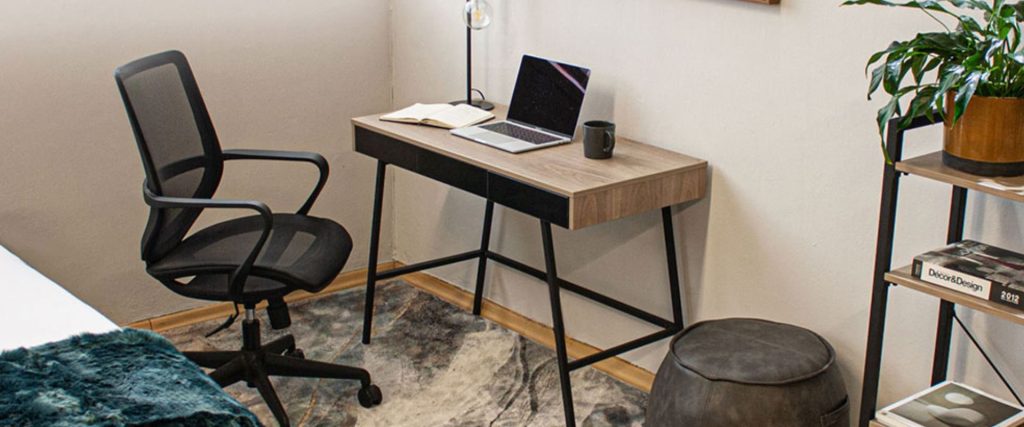
Ensuring your desk is at the right height is crucial for maintaining good posture and preventing discomfort during long work hours. The ideal desk height allows you to keep your arms at a 90-degree angle when typing, with your feet flat on the floor. If your desk is too high or low, consider using a desk riser or adjustable desk legs to achieve the perfect height.
For added flexibility, consider investing in a standing desk or a desk converter that allows you to alternate between sitting and standing throughout the day. This can help reduce the negative effects of prolonged sitting and add variety to your work routine, keeping you more alert and comfortable.
17. Ergonomic Chair Selection

A high-quality, ergonomic chair is one of the most important investments you can make for your home office. Look for chairs with adjustable features such as seat height, armrests, and lumbar support to customize the fit to your body. The chair should provide proper support for your lower back and encourage good posture.
Consider chairs with breathable materials to keep you comfortable during long work sessions. If possible, try out different chairs before making a purchase to ensure you find one that suits your body type and work style. Remember that the most expensive chair isn’t always the best fit for everyone – focus on finding a chair that provides the right support and comfort for your needs.
18. Footrest and Anti-Fatigue Mats

Incorporating a footrest or an anti-fatigue mat can significantly enhance your comfort, especially if you spend long hours at your desk. A footrest can help improve circulation and reduce pressure on your lower back by allowing you to adjust your leg position throughout the day. Choose an adjustable footrest that can be tilted to different angles for maximum comfort.
For those using standing desks, an anti-fatigue mat is essential. These mats provide cushioning and support, reducing the strain on your feet, legs, and back when standing for extended periods. Look for mats with contoured surfaces that encourage subtle movements, helping to keep your muscles engaged and improving overall comfort.
19. Proper Monitor Positioning

The position of your computer monitor plays a crucial role in maintaining good posture and reducing eye strain. Position your monitor at arm’s length, with the top of the screen at or slightly below eye level. This allows you to maintain a neutral neck position and reduces the need to tilt your head up or down.
If you use multiple monitors, arrange them side by side at the same height and distance. For those who frequently refer to physical documents, consider using a document holder positioned between your keyboard and monitor to minimize neck movement. Proper monitor positioning not only enhances comfort but also contributes to a more organized and professional-looking workspace.
20. Keyboard and Mouse Ergonomics

Pay attention to the ergonomics of your keyboard and mouse to prevent repetitive strain injuries and ensure comfort during long work sessions. Position your keyboard directly in front of you, with your elbows bent at a 90-degree angle. Consider using a keyboard tray or a negative-tilt keyboard tray to achieve the optimal typing position.
Choose a mouse that fits comfortably in your hand and allows for a natural wrist position. Ergonomic mice come in various shapes and sizes, including vertical designs that promote a more neutral hand position. Use a mousepad with a wrist rest to provide support and reduce strain on your wrist and forearm.
Lighting and Ambiance
21. Task Lighting

Proper task lighting is essential for reducing eye strain and maintaining productivity in your home office. Invest in a high-quality desk lamp that provides focused illumination for reading, writing, and detailed work. Look for lamps with adjustable arms and brightness settings to customize the lighting to your needs throughout the day.
Consider LED task lights, which offer energy efficiency and a range of color temperatures. Cool white light can help you stay alert during the day, while warmer tones can create a cozier atmosphere in the evening. Position your task light to minimize glare on your computer screen and avoid casting shadows on your work area.
22. Natural Light Optimization

Maximizing natural light in your home office can significantly improve your mood, productivity, and overall well-being. Position your desk near a window to take advantage of daylight, but be mindful of glare on your computer screen. Use sheer curtains or adjustable blinds to control the amount of light entering the room throughout the day.
If your office lacks windows or natural light, consider using full-spectrum light bulbs that mimic natural daylight. These can help regulate your circadian rhythm and create a more inviting atmosphere. You can also use mirrors strategically to reflect light and create the illusion of a brighter, more spacious room.
23. Ambient Lighting

In addition to task lighting, incorporating ambient lighting can create a warm and inviting atmosphere in your home office. Use floor lamps, table lamps, or wall sconces to provide soft, diffused light that complements your main light source. This layered lighting approach helps reduce harsh shadows and creates a more comfortable environment for long work hours.
Consider using smart lighting systems that allow you to adjust the brightness and color temperature of your lights throughout the day. This can help you create different moods and atmospheres to suit various tasks and times of day, from energizing bright light for focused work to softer, warmer light for winding down in the evening.
24. Candlelight and Fairy Lights

For added coziness and ambiance, incorporate candlelight or fairy lights into your home office decor. Scented candles not only provide soft, flickering light but also infuse the room with pleasant aromas. Choose candles with calming scents like lavender or vanilla for a relaxing atmosphere, or invigorating scents like citrus or peppermint for an energy boost.
Fairy lights or string lights can add a magical touch to your workspace. Drape them along bookshelves, around window frames, or in potted plants to create a warm, inviting glow. Opt for warm white lights for a cozy feel, or choose color-changing lights to adjust the mood of your office throughout the day.
25. Light Therapy Lamps

If you live in an area with limited natural light or struggle with seasonal affective disorder, consider incorporating a light therapy lamp into your home office. These specialized lamps mimic natural outdoor light and can help regulate your body’s circadian rhythms, improve mood, and increase energy levels.
Position the light therapy lamp within your peripheral vision, about 16-24 inches from your face, and use it for 20-30 minutes each morning. This can be especially beneficial during darker winter months or if your home office lacks adequate natural light. Remember to consult with a healthcare professional before starting light therapy, especially if you have any pre-existing eye conditions or take medications that increase light sensitivity.
Color Psychology and Design
26. Calming Blue Hues

Incorporating shades of blue into your home office can create a sense of calm and focus. Blue is known to have a soothing effect on the mind and can help reduce stress and anxiety. Consider painting an accent wall in a soft blue or incorporating blue through furniture pieces, artwork, or accessories.
Lighter blues can make a space feel more open and airy, while deeper blues can add a sense of sophistication and depth. Pair blue with neutral tones like white or gray for a clean, professional look, or combine it with warm wood tones for a more inviting and cozy atmosphere.
27. Energizing Green Accents

Green is associated with nature, growth, and renewal, making it an excellent choice for adding energy and freshness to your home office. Use green as an accent color through plants, throw pillows, or decorative objects to create a connection with nature and promote a sense of balance and harmony in your workspace.
Consider different shades of green to achieve various effects. Soft sage greens can create a calming atmosphere, while brighter emerald tones can add vibrancy and stimulate creativity. You can also incorporate green through botanical prints or nature-inspired artwork to bring the outdoors inside and create a more relaxing environment.
28. Warm Earth Tones

Incorporating warm earth tones into your home office can create a cozy, grounding atmosphere that promotes focus and productivity. Colors like terracotta, ochre, and sienna can add depth and warmth to your space, making it feel more inviting and comfortable.
Use these colors in larger elements like area rugs, curtains, or upholstered furniture to create a sense of warmth without overwhelming the space. You can also introduce earth tones through smaller accents like throw pillows, picture frames, or decorative objects. Pairing these warm hues with natural materials like wood and stone can further enhance the cozy, organic feel of your home office.
Soundscape Creation Tip: Design a custom audio environment with a mix of nature sounds, low-fi beats, and white noise to enhance focus and create a soothing atmosphere.
29. Neutral Base with Pops of Color
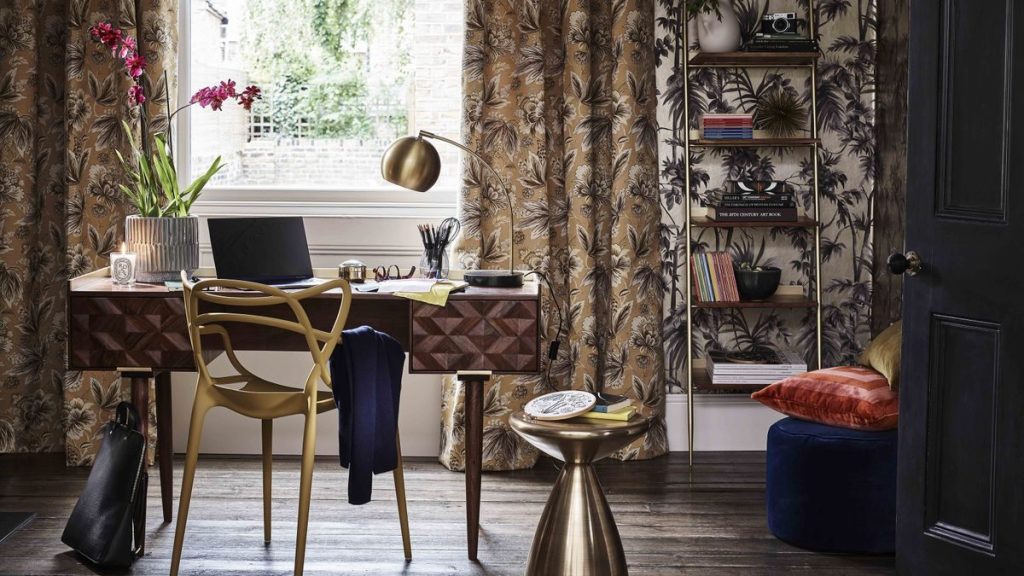
Creating a neutral base for your home office allows for flexibility and longevity in your design. Start with a palette of whites, grays, or beiges for your walls and larger furniture pieces. This creates a clean, professional backdrop that can easily adapt to changing tastes and trends.
Add personality and energy to your neutral base with strategic pops of color. This could be through vibrant artwork, colorful office accessories, or a statement chair in a bold hue. The beauty of this approach is that you can easily update the look of your office by swapping out these colorful elements without a major overhaul.
30. Monochromatic Schemes

A monochromatic color scheme can create a sophisticated and cohesive look in your home office while still maintaining a cozy atmosphere. Choose a color you love and use various shades, tints, and tones of that color throughout the space.
For example, if you choose a calming blue, you might paint the walls a pale sky blue, use navy for your office chair, and incorporate various blue-toned accessories and artwork. This approach creates visual interest through texture and subtle color variations while maintaining a harmonious and soothing environment.
Furniture and Layout
31. L-Shaped Desk Configurations

L-shaped desks are excellent for maximizing corner spaces and creating distinct work zones within your home office. This configuration provides ample surface area for your computer, paperwork, and other essentials while allowing you to easily switch between tasks by simply turning your chair.
Consider an L-shaped desk with built-in storage to keep your workspace organized and clutter-free. You can dedicate one side of the L for computer work and the other for writing or crafting, creating a versatile and efficient workspace that adapts to various tasks throughout your day.
32. Standing Desk Options

Incorporating a standing desk into your home office can provide numerous health benefits and add variety to your work routine. Standing desks come in various styles, from full-sized adjustable desks to compact desk converters that sit atop your existing workspace.
Look for models with smooth height adjustment mechanisms that allow you to easily switch between sitting and standing throughout the day. To make your standing desk setup more comfortable, consider adding an anti-fatigue mat and ensuring your monitor is at the correct height to maintain good posture.
33. Built-In Office Nooks

If space is at a premium in your home, consider creating a built-in office nook. This could be a converted closet, an unused corner of your living room, or a space under the stairs. Built-in desks and shelving can maximize vertical space and create a dedicated work area that seamlessly blends with your home’s decor.
Customize your office nook with task lighting, hidden storage solutions, and a comfortable chair that can be tucked away when not in use. This approach allows you to create a functional workspace without sacrificing too much living space in your home.
34. Floating Desk Designs

Floating desks are an excellent option for small spaces or for creating a minimalist look in your home office. These wall-mounted desks take up minimal floor space and can be customized to fit your specific needs and available wall area.
Consider a floating desk with a fold-down top that can be closed when not in use, further maximizing your space. Pair your floating desk with wall-mounted shelves or a pegboard system above to create additional storage without cluttering your floor space.
35. Ergonomic Chair Alternatives

While a traditional ergonomic office chair is often the go-to choice for home offices, there are alternative seating options that can add comfort and style to your space. Consider an exercise ball chair for improving posture and engaging your core muscles, or a kneeling chair to promote a more active sitting position.
For a cozier option, try a comfortable armchair with good back support paired with a laptop stand or small side table. This can create a more relaxed working environment for tasks that don’t require long periods at a desk, such as reading or brainstorming.
Storage and Organization
36. Creative Bookshelf Ideas

Bookshelves are not only functional but can also serve as a focal point in your home office. Get creative with your bookshelf design to add personality and style to your space. Consider a floor-to-ceiling built-in bookshelf for a classic, library-inspired look, or opt for floating shelves arranged in an artistic pattern for a more modern approach.
Mix up your shelf styling by alternating between vertical and horizontal book stacking, incorporating decorative objects, and leaving some open space to prevent a cluttered appearance. Use bookends or small plants to add visual interest and keep your books organized.
37. Wall-Mounted Organizers

Maximize your vertical space and keep your desk clutter-free with wall-mounted organizers. Options range from simple floating shelves to more elaborate systems with multiple components like file holders, small drawers, and cork boards.
Consider a pegboard system that allows you to customize your organization setup easily. You can add hooks, small shelves, and containers to create a flexible storage solution that adapts to your changing needs. This not only keeps your essentials within reach but also adds a decorative element to your office walls.
38. Drawer Dividers and Organizers

Keep your desk drawers tidy and efficient with drawer dividers and organizers. These simple additions can transform a chaotic drawer into a well-organized storage space, making it easy to find what you need quickly.
Use adjustable dividers to create custom compartments for different items, or opt for modular organizer trays that can be mixed and matched to suit your needs. Don’t forget about vertical space within deep drawers – consider using stackable organizers to maximize storage capacity.
39. Rolling Carts for Flexibility
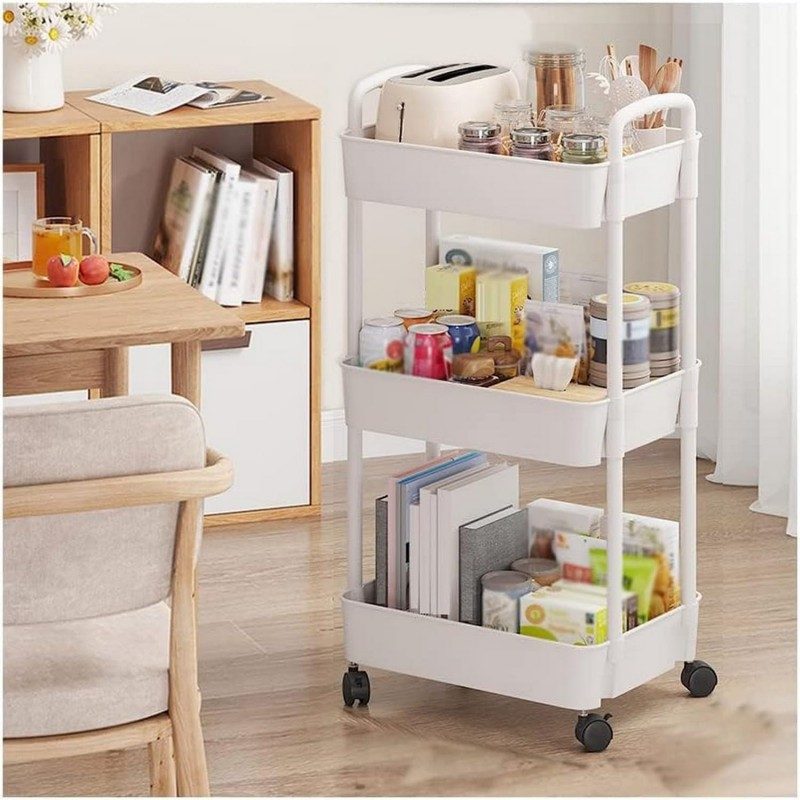
A rolling cart can be a versatile addition to your home office, providing extra storage and the flexibility to move your supplies where you need them. Choose a cart with multiple tiers to organize different categories of items, such as office supplies, files, or craft materials.
Opt for a cart that complements your office decor – there are many stylish options available in various materials and colors. When not in use, you can easily roll the cart under your desk or into a closet to maintain a clean, uncluttered look in your office.
40. Hidden Cable Management

Effective cable management is crucial for maintaining a tidy and professional-looking home office. Invest in cable management solutions that hide wires and cords from view, such as cable sleeves, under-desk cable trays, or cord organizers that attach to the back of your desk.
For a more permanent solution, consider installing a cable management system within your walls or along baseboards. This can be particularly effective if you’re setting up a built-in office space. Remember to leave some slack in your cables to allow for movement and prevent strain on your devices.
Comfort and Wellness
41. Indoor Plants for Air Purification
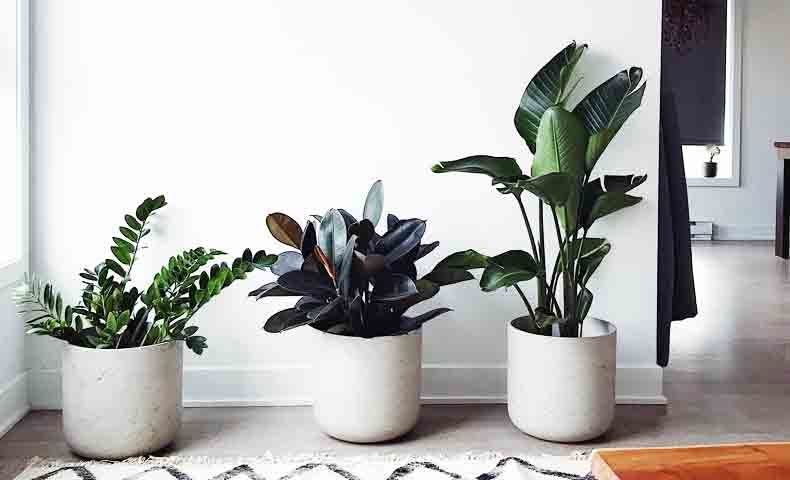
Incorporating indoor plants into your home office not only adds a touch of nature but also helps purify the air and boost your mood. Choose low-maintenance plants that thrive in indoor environments, such as snake plants, pothos, or ZZ plants.
Place larger plants in corners or near windows to create a lush atmosphere, and use smaller plants on your desk or shelves as decorative accents. If you don’t have a green thumb, consider air-purifying alternatives like bamboo charcoal bags or a small air purifier to maintain a fresh and healthy workspace.
42. Aromatherapy and Essential Oils

Enhance the coziness of your home office with aromatherapy using essential oils. Different scents can promote various moods and cognitive states – for example, lavender for relaxation, peppermint for focus, or citrus for energy.
Use a diffuser to disperse essential oils throughout your office, or apply diluted oils to pulse points for a more subtle effect. You can also incorporate scented candles or wax melts for a similar aromatic experience. Experiment with different scents to find what works best for your productivity and well-being.
43. Proper Ventilation and Air Quality

Maintaining good air quality in your home office is essential for your health and comfort. Ensure your workspace has proper ventilation by opening windows regularly to allow fresh air circulation. If opening windows isn’t possible, consider using a fan to keep air moving.
Invest in an air purifier with a HEPA filter to remove allergens, dust, and other pollutants from your office air. Place it near your workspace for maximum effectiveness. Additionally, be mindful of potential sources of indoor air pollution, such as printers or cleaning products, and take steps to minimize their impact on your air quality.
44. Noise-Cancelling Solutions

Create a peaceful work environment by implementing noise-cancelling solutions in your home office. If you’re sensitive to noise or work in a busy household, consider investing in noise-cancelling headphones to block out distractions and help you focus.
For a more ambient solution, use a white noise machine or app to create a consistent background sound that masks disruptive noises. You can also improve the acoustics of your office by adding soft furnishings like rugs, curtains, or acoustic panels to absorb sound and reduce echoes.
45. Ergonomic Accessories

Complement your ergonomic chair and desk setup with additional accessories to enhance comfort and prevent strain during long work sessions. A padded wrist rest for your keyboard and mouse can help maintain proper wrist alignment and reduce the risk of repetitive strain injuries.
Consider using a document holder to position papers at eye level, reducing neck strain when referencing physical documents. An adjustable footrest can help improve circulation and reduce pressure on your lower back. Remember to take regular breaks and incorporate stretching exercises into your routine to maintain overall wellness in your home office.
Technology and Connectivity
46. Wireless Charging Stations

Keep your workspace clutter-free and your devices charged with wireless charging stations. Incorporate a wireless charging pad into your desk setup for convenient charging of compatible smartphones and other devices.
Some desks come with built-in wireless charging capabilities, or you can opt for standalone chargers that blend seamlessly with your office decor. This not only reduces cable clutter but also ensures your devices are always ready when you need them.
47. Smart Home Integration

Integrate smart home technology into your office for enhanced convenience and efficiency. Use smart plugs to control lamps and other electronics with voice commands or smartphone apps. Install smart light bulbs that can adjust color temperature and brightness throughout the day to support your circadian rhythm and boost productivity.
Consider a smart thermostat to maintain optimal temperature in your workspace, or use smart sensors to monitor air quality and humidity levels. These technologies can help create a more comfortable and responsive work environment tailored to your preferences.
48. Dual Monitor Setups

Boost your productivity and create a more ergonomic workspace with a dual monitor setup. Having two screens allows you to view multiple documents or applications simultaneously, reducing the need to constantly switch between windows.
When setting up dual monitors, ensure they are at the same height and distance from your eyes to maintain proper posture. Use monitor arms to easily adjust the position of your screens and free up desk space. If you frequently work with a laptop, consider using a laptop stand paired with an external monitor for a similar dual-screen experience.
49. High-Speed Internet Solutions

A reliable, high-speed internet connection is crucial for a productive home office. Invest in a quality router and consider upgrading your internet plan if you frequently experience slow speeds or connectivity issues.
Position your router in a central location, free from obstructions, to ensure optimal coverage throughout your home office. If you have a large home or thick walls, consider using a mesh Wi-Fi system to extend your network coverage. For the most stable connection, use an ethernet cable to directly connect your computer to the router when possible.
50. Voice-Activated Assistants

Incorporate voice-activated assistants like Amazon Alexa, Google Assistant, or Apple’s Siri into your home office for hands-free convenience. Use voice commands to set reminders, schedule appointments, or quickly look up information without interrupting your workflow.
These assistants can also help control smart home devices, play background music, or even read out your daily schedule. Choose a voice assistant that integrates well with your existing devices and workflow to maximize its usefulness in your home office setup.
Personalizing Your Space
51. Family Photos and Memories
Personalizing your home office with family photos and mementos can create a warm, motivating atmosphere. Display framed photos of loved ones or special moments on your desk or shelves. This not only adds a personal touch to your workspace but also serves as a source of inspiration and comfort during challenging work days.
Consider creating a gallery wall with a mix of family photos and inspirational quotes or artwork. Use matching frames for a cohesive look, or mix and match styles for a more eclectic vibe. Remember to balance personal items with professional decor to maintain a polished appearance, especially if your home office is visible during video calls.
52. Inspirational Quote Displays

Surround yourself with motivational words by incorporating inspirational quote displays into your home office decor. Use framed prints, canvas art, or even custom neon signs to showcase quotes that resonate with your personal or professional goals.
Rotate your quote displays periodically to keep your space feeling fresh and aligned with your current aspirations. You can also use a letter board or chalkboard to easily change up your motivational messages. Place these displays where they’re easily visible from your work area to provide a quick boost of inspiration throughout your day.
53. Hobby and Interest Showcases

Integrate elements of your hobbies and interests into your home office design to create a space that truly reflects your personality. If you’re a music lover, display vinyl records or musical instruments as decor. For book enthusiasts, create a cozy reading nook with a comfortable chair and a well-stocked bookshelf.
Use shelving or display cases to showcase collections related to your interests, whether it’s vintage cameras, travel souvenirs, or art pieces. This not only personalizes your space but also provides conversation starters for video calls and can serve as a source of inspiration and relaxation during breaks.
54. Custom Desk Accessories
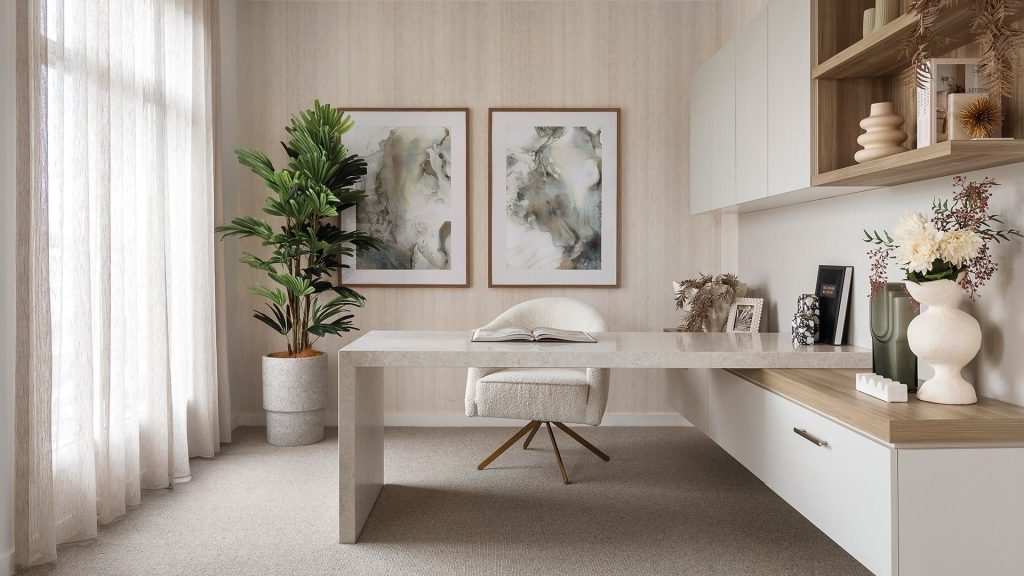
Elevate your desk setup with custom accessories that reflect your style and improve functionality. Look for unique desk organizers, pen holders, or paper trays that complement your office decor while keeping your essentials tidy and within reach.
Consider personalizing items like mousepads, coasters, or desk calendars with custom designs or photos. You can also create a cohesive look by choosing desk accessories in a consistent color scheme or material, such as all wood or metallic finishes. These small touches can make your workspace feel more polished and tailored to your preferences.
55. Seasonal Decor Updates

Keep your home office feeling fresh and aligned with the changing seasons by incorporating seasonal decor updates. This can be as simple as swapping out throw pillow covers, changing your desktop wallpaper, or updating small decorative items to reflect the current season or upcoming holidays.
During winter, add cozy elements like a soft throw blanket or warm-toned accessories. In spring, incorporate fresh flowers or pastel accents. Summer might call for bright, energizing colors, while fall can be celebrated with warm earth tones and natural textures. These periodic updates can help prevent your workspace from feeling stagnant and can boost your mood throughout the year.
Productivity Boosters
56. Dedicated Brainstorming Areas

Designate a specific area in your home office for brainstorming and creative thinking. This could be a comfortable armchair with a small side table, a standing easel with a large notepad, or a wall covered in whiteboard paint for expansive idea mapping.
Equip your brainstorming area with tools that support your creative process, such as colorful markers, sticky notes, or mind mapping software on a tablet. Having a dedicated space for ideation can help you mentally shift gears when it’s time to think creatively, boosting your productivity and innovation.
Pro Tip: Install a small living wall or vertical garden to improve air quality, reduce stress, and add a vibrant natural element to your office.
57. Time Management Visual Aids

Incorporate visual aids for time management to help you stay on track and focused throughout your workday. A large wall clock can serve both as a functional timepiece and a decorative element. Consider using a time-blocking method with a physical planner or a large wall calendar to visually map out your tasks and deadlines.
Digital options like time-tracking apps displayed on a secondary monitor can also be effective. Some people find success with the Pomodoro Technique, using a decorative timer to structure work intervals and breaks. Choose time management tools that align with your working style and integrate seamlessly into your office decor.
58. Vision Board Creation

Create a vision board to keep your long-term goals and aspirations visible in your daily work environment. Dedicate a section of your wall or a pinboard to display images, quotes, and representations of your personal and professional objectives.
Include a mix of short-term and long-term goals, along with inspirational imagery that motivates you. Update your vision board regularly to reflect your evolving aspirations and celebrate achievements. Positioning your vision board within your line of sight can serve as a constant reminder of your purpose and drive, helping to maintain focus and motivation during challenging work periods.
59. Distraction-Free Zones

Create a distraction-free zone within your home office to support deep focus work. This could be a specific corner of your room or a movable privacy screen that you set up when you need to concentrate. Minimize visual clutter in this area and ensure it’s positioned away from high-traffic areas of your home.
Equip your distraction-free zone with noise-cancelling headphones, a “do not disturb” sign for family members, and apps or browser extensions that block distracting websites during focus periods. Having a designated space for concentrated work can signal to your brain that it’s time to enter a flow state, boosting your productivity on complex tasks.
Related Guide: 100 Unique Cozy Bedroom Ideas
60. Productivity Apps and Tools
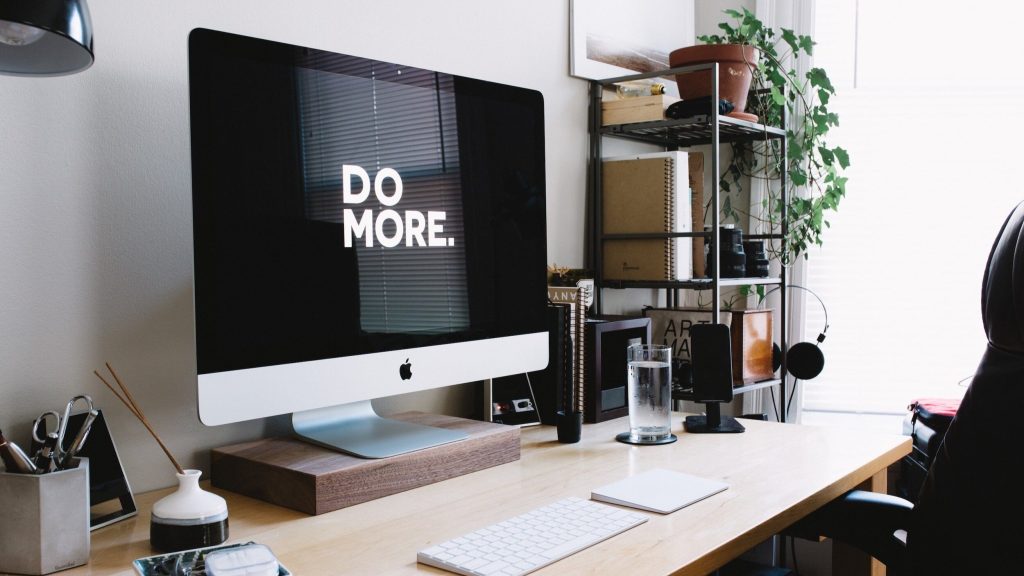
Integrate productivity apps and tools into your home office setup to streamline your workflow and boost efficiency. Use project management tools like Trello or Asana to organize tasks and collaborate with team members. Time-tracking apps can help you understand how you’re spending your work hours and identify areas for improvement.
Consider using a password manager to securely store and easily access your various login credentials. Note-taking apps like Evernote or OneNote can help you organize ideas and information across devices. Display shortcuts to your most-used productivity tools on your computer’s desktop or a tablet for quick access throughout your workday.
Cozy Corners and Nooks
61. Reading Nook Design

Incorporate a cozy reading nook into your home office design to provide a comfortable space for reviewing documents, brainstorming, or taking a relaxing break. Choose a quiet corner of your office and furnish it with a comfortable armchair or a plush window seat if space allows.
Add soft lighting with a floor lamp or wall-mounted sconce to create a warm ambiance. Include a small side table for your coffee mug or notebook, and a soft throw blanket for added comfort. This dedicated reading space can serve as a refreshing change of scenery within your office, promoting creativity and relaxation.
62. Meditation Corner

Create a small meditation corner in your home office to support mindfulness and stress reduction during your workday. Designate a quiet area where you can sit comfortably, whether on a cushion, a yoga mat, or a small meditation bench.
Keep this area minimally decorated to avoid distractions, but consider adding elements that promote calmness, such as a small indoor fountain, a zen garden, or a nature-inspired piece of art. Having a dedicated space for brief meditation sessions can help you reset your mind, reduce stress, and improve focus throughout your workday.
63. Coffee or Tea Station

Set up a small coffee or tea station within your home office for convenient refreshment throughout the day. Use a compact side table or a section of your bookshelf to create a designated beverage area. Include a small electric kettle, a French press or pour-over coffee maker, and an assortment of your favorite teas or coffee beans.
Display a few attractive mugs and store supplies in decorative containers to keep the area tidy and visually appealing. This cozy addition to your office not only provides easy access to your preferred beverages but also creates a comforting ritual to punctuate your work sessions.
64. Cozy Window Seat

If your home office has a window, consider creating a cozy window seat to take advantage of natural light and views. Install a built-in bench with hidden storage underneath, or use a comfortable bench or daybed positioned against the window.
Add plush cushions and throw pillows in colors and patterns that complement your office decor. This space can serve multiple purposes – a spot for reading, a secondary seating area for informal meetings, or simply a place to relax and enjoy the view during short breaks.
65. Mini Library Setup

For book lovers, creating a mini library within your home office can add both functionality and charm. Install floor-to-ceiling bookshelves on one wall, or use a series of floating shelves to display your book collection. Organize your books by color, subject, or author to create an aesthetically pleasing arrangement.
Include a comfortable reading chair, a good reading lamp, and a small side table to create a cozy spot for diving into your favorite books. This mini library can serve as a source of inspiration and knowledge, as well as a beautiful backdrop for video calls.
Outdoor and Nature Elements
66. Indoor-Outdoor Office Transition

If possible, create a seamless transition between your indoor office space and an outdoor area. This could involve positioning your desk near large windows or glass doors that open onto a balcony, patio, or garden. Use similar flooring materials or color schemes to visually connect the indoor and outdoor spaces.
Consider adding a small seating area just outside your office door for an alternative workspace on pleasant days. This indoor-outdoor connection can provide a refreshing change of scenery, access to fresh air, and a stronger connection with nature throughout your workday.
67. Nature-Inspired Artwork

Bring the calming influence of nature into your home office through carefully chosen artwork. Select pieces that depict serene landscapes, botanical illustrations, or abstract representations of natural elements. Large-scale nature photography can create a striking focal point and almost serve as a “window” to the outdoors.
Mix different mediums such as paintings, prints, and textured wall hangings to add depth and interest to your walls. Rotate your nature-inspired artwork seasonally to keep your space feeling fresh and aligned with the changing outdoor environment.
68. Natural Material Incorporation

Incorporate natural materials throughout your home office to create a warm, organic atmosphere. Choose furniture pieces made from wood, rattan, or bamboo. Add texture with jute rugs, linen curtains, or wool throw blankets.
Use natural stone elements like a marble desk accessory or a geode bookend. These organic materials not only add visual warmth but also create a tactile, sensory-rich environment that can enhance your overall comfort and connection to nature while working.
69. Sunlight Optimization

Maximize natural sunlight in your home office to create a bright, energizing workspace. Position your desk to take advantage of available natural light, ideally perpendicular to windows to minimize glare on your computer screen.
Use light, reflective colors on walls and choose window treatments that allow you to easily control light levels throughout the day. If direct sunlight is an issue, consider using sheer curtains or light-filtering blinds to diffuse the light while still benefiting from its presence. Adequate exposure to natural light can improve your mood, enhance productivity, and regulate your circadian rhythm.
70. Indoor Water Features

Introduce the soothing sound of water into your home office with a small indoor water feature. Options range from compact desktop fountains to larger, freestanding designs. The gentle sound of flowing water can create a peaceful ambiance, mask background noise, and add a touch of natural elegance to your workspace.
Choose a water feature that complements your office decor and is easy to maintain. Position it where you can enjoy both the sound and sight of the water without it being a distraction. Some water features also serve as humidifiers, which can be beneficial for maintaining comfortable air quality in your office.
Final Touches
71. Signature Scent Selection

Create a unique sensory experience in your home office by selecting a signature scent. Choose a fragrance that you find both pleasant and energizing, such as a crisp citrus blend for focus or a warm vanilla for comfort. Use this scent consistently in your workspace through candles, reed diffusers, or room sprays.
A signature scent can help signal to your brain that it’s time to work when you enter your office, enhancing focus and productivity. It can also make your workspace feel more inviting and personalized. Be mindful of keeping the scent subtle to avoid overwhelming your senses or disturbing others who might enter your workspace.
72. Textured Wall Treatments

Add depth and interest to your home office with textured wall treatments. Options range from textured wallpaper and grasscloth coverings to 3D wall panels or a statement wall of reclaimed wood. These textures not only provide visual appeal but can also help absorb sound, improving the acoustics of your office.
Choose textures that complement your overall design style and color scheme. A textured accent wall can serve as a focal point in your office, adding character and coziness to the space. Consider combining different textures, such as a smooth painted wall with a textured area rug, to create a rich, layered environment.
73. Decorative Storage Solutions
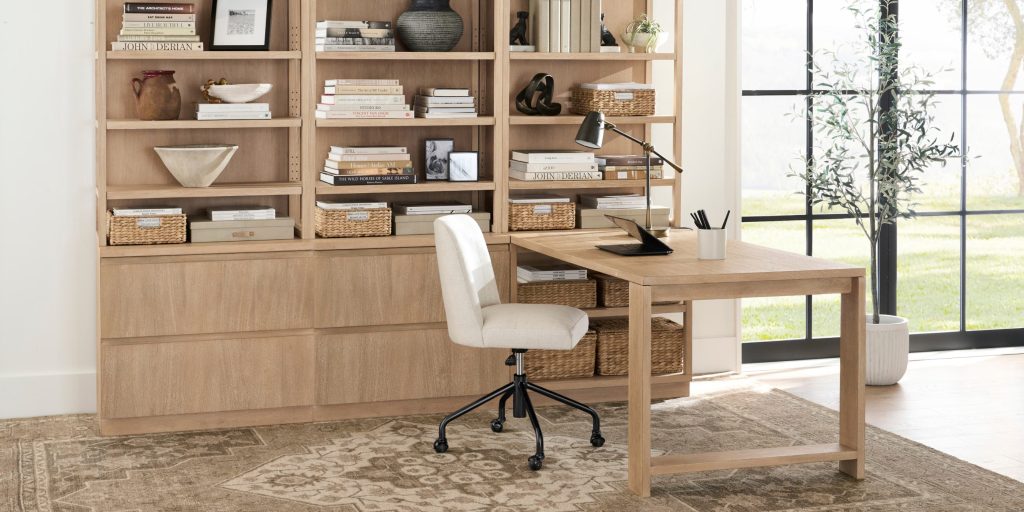
Elevate your office organization with decorative storage solutions that are both functional and aesthetically pleasing. Use attractive baskets or boxes on open shelving to store supplies and papers out of sight while adding texture and color to your space.
Opt for vintage suitcases or trunks as unique storage pieces that can double as side tables. Wall-mounted cubbies or floating shelves with a mix of open and closed storage can keep essentials within reach while contributing to your office decor. By choosing storage options that align with your design style, you can maintain a clutter-free space without sacrificing visual appeal.
74. Layered Lighting Design

Create a cozy and functional home office environment with a layered lighting design. Combine ambient, task, and accent lighting to achieve a well-lit space that can adapt to different needs throughout the day.
Use a combination of overhead lighting, desk lamps, and floor lamps to provide adequate illumination for various tasks. Add warmth with table lamps or wall sconces that provide softer, indirect light. Consider installing dimmer switches to easily adjust light levels, and use smart bulbs that can change color temperature to support your circadian rhythm and create different moods in your office.
75. Personal Growth Display

Dedicate a space in your home office to showcase your personal and professional growth. Create a “success wall” or use a pinboard to display certificates, awards, positive feedback, or milestones you’ve achieved. Include visual representations of skills you’ve acquired or projects you’re proud of.
This display serves as a reminder of your capabilities and progress, boosting confidence and motivation. Regularly update this area to reflect recent accomplishments and current goals. Positioning this display within view of your workspace can provide encouragement during challenging tasks and reinforce a positive, growth-oriented mindset.
Conclusion
Creating a cozy home office is about more than just functionality – it’s about crafting a space that nurtures your productivity, creativity, and well-being.
By incorporating elements that appeal to all your senses, from visual aesthetics to tactile comforts, you can transform your workspace into a sanctuary that supports your professional goals while reflecting your personal style.
Remember that the key to a truly cozy home office lies in personalization. Experiment with different ideas, and don’t be afraid to adapt your space as your needs and preferences evolve.
With thoughtful design and attention to detail, your home office can become a place you genuinely look forward to spending time in, fostering both professional success and personal satisfaction in your work-from-home journey.

